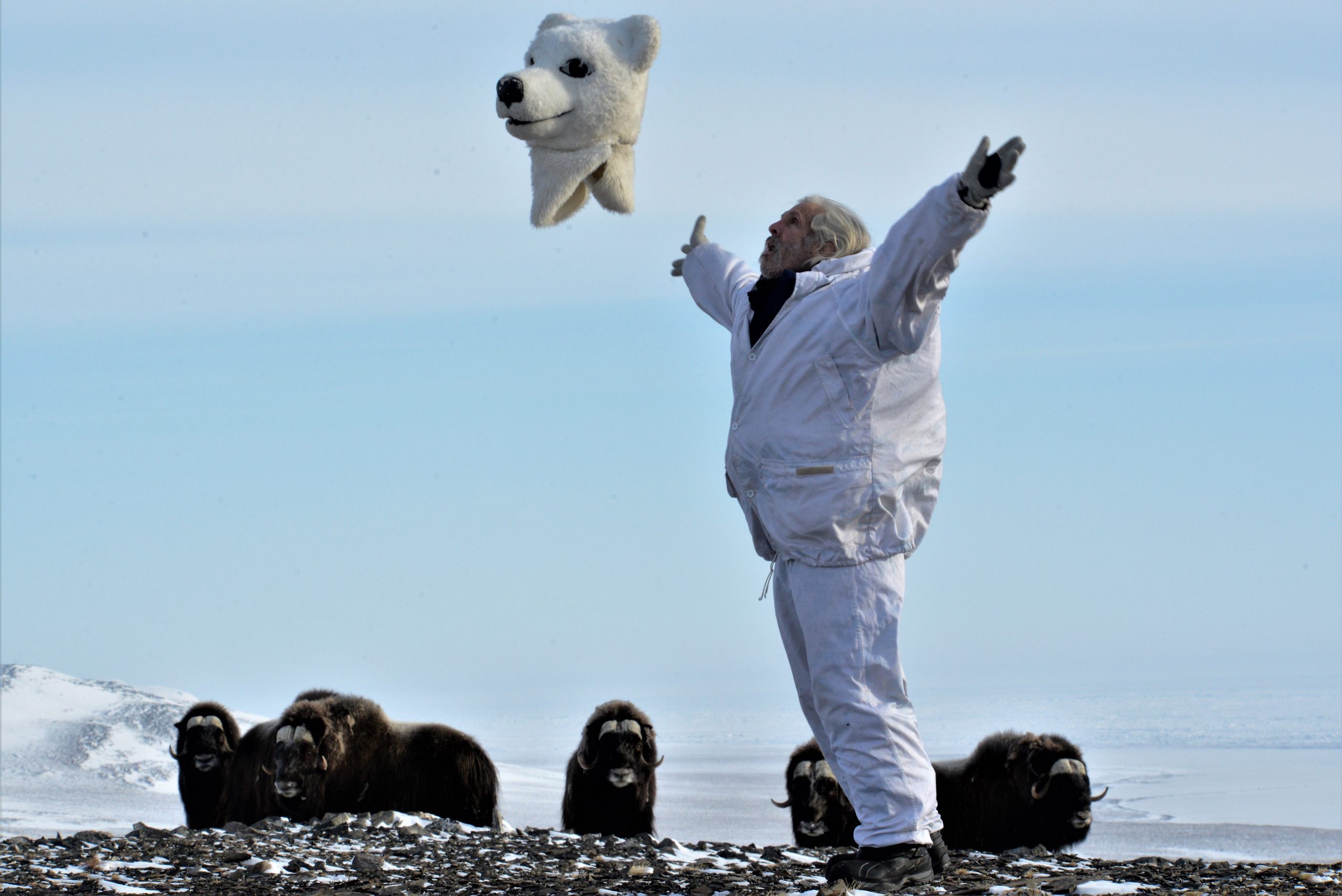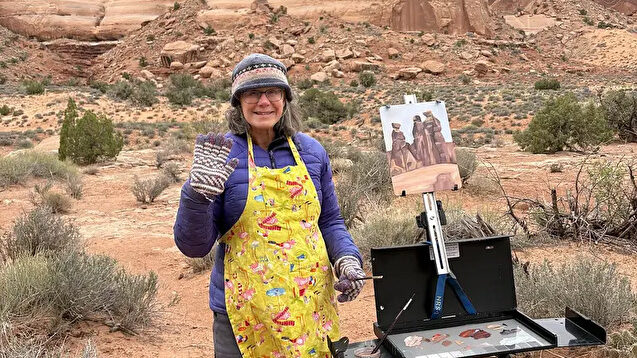Some information may be outdated.
Joel Berger returned to Moab four years ago after being arrested in Russia. He was on Wrangel Island, the freezing northeast corner of Russia 400 miles off the coast of Alaska, studying musk oxen—specifically, how musk oxen, who roamed the earth with woolly mammoths, react to polar bears. To conduct his research, he dressed as a polar bear, donning a costume polar bear head and white winter jumpsuit. Berger calls himself an “extreme conservationist,” and has dedicated his career to studying the effects of climate change through the eyes of large animals.
Berger will come to Moab on Tuesday, Dec. 14 to kick off the new series of Science Moab on Tap, the annual set of lectures by local scientists and researchers hosted by the nonprofit Science Moab. He’ll discuss the relationship between tourism and bighorn sheep in Moab during his talk, “Bighorn Sheep in Moab’s Playground: Casualty, Bio-culture Resource, or Something Else?”
“Moab is the recreation capital of the U.S., if not the world,” Berger said in an interview with the Moab Sun News. “We have three to four million people coming in each year to see it, which is great that they do, but there are concerns about wildlife disturbance.”
Berger has always been interested in bighorn sheep, he said. He currently resides in Castle Valley, and is the Barbara Cox Anthony University Chair of Wildlife Conservation. He’s a professor at Colorado State University and a senior scientist with the Wildlife Conservation Society—he’s even been featured in an Archie Comic published in 2004.
It was only after he returned to Moab in 2017 that he started studying them. One of the first things he noticed when he came back was the noise—of cars, of UTVs, of mountain bikers and hikers on trails—and he wondered how that noise impacted the bighorn sheep population. While he’s been all around the world doing research, his heart is on the Colorado Plateau, he said.
Science Moab on Tap started because “with Science Moab, there was this recognition that there’s all of this really interesting and relevant science happening in the landscapes around Moab,” said Kristina Young, the founder of Science Moab.
The “on tap” events are meant to be community oriented and accessible, she said—typically, recent findings or breakthroughs in science are published in scientific papers locked behind paywalls. These events are meant to be both informal and interesting.
“They’re made for the community, and they’re by scientists who work in, and sometimes live in, the Moab community,” Young said.
Bighorn sheep are “close to our hearts,” Young said, pointing out that the logo of Science Moab is a bighorn sheep. The topic of recreation is so common in Moab that it’ll be interesting to look at it from an angle of wildlife conservation, she said.
“My hope is that these events give people a space to come together in a fun and community centered environment to learn together, and get excited about this place together,” she said. “And to really relish in all the cool things that Moab, and this region, have to offer. There’s still so much to learn.”
Joel Berger’s talk will be on Tuesday, Dec. 14 at Spitfire Smokehouse, a new location for Science Moab on Tap. Spitfire’s layout allows for more people to sit outside, Young said. Doors open at 5:30 p.m., and the talk will begin at 6 p.m.
There will be two other Science Moab on Tap events at the same time and place: on Tuesday, Jan. 11, R.E. Burrillo will present “Farming High & Dry: What Chemistry and Collaborative Archaeology Reveal about Agriculture in Ancient Bears Ears,” and on Tuesday, Feb. 8, Michele Rehbein will present “Who Run the World? Mosquitoes: Keeping Up With the World’s Deadliest Animal.”
Appreciate the coverage? Help keep local news alive.
Chip in to support the Moab Sun News.





